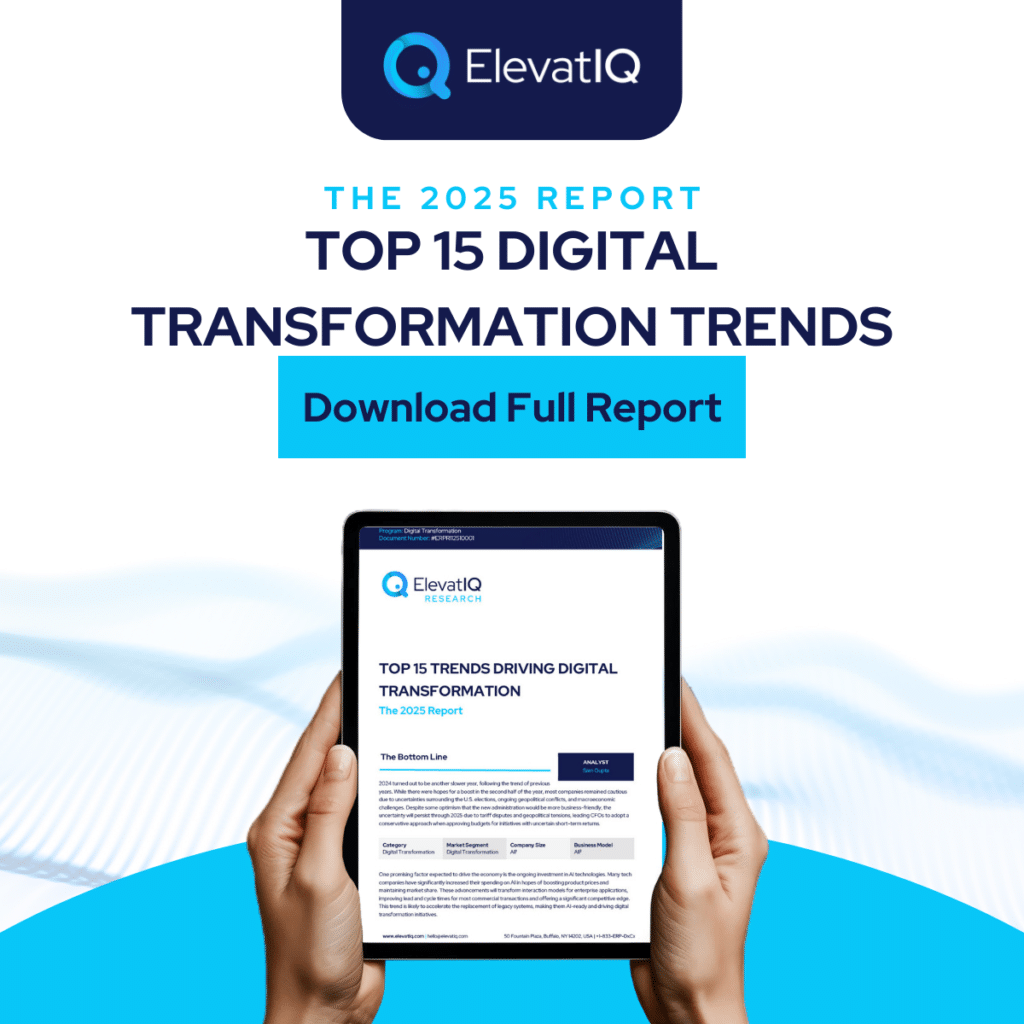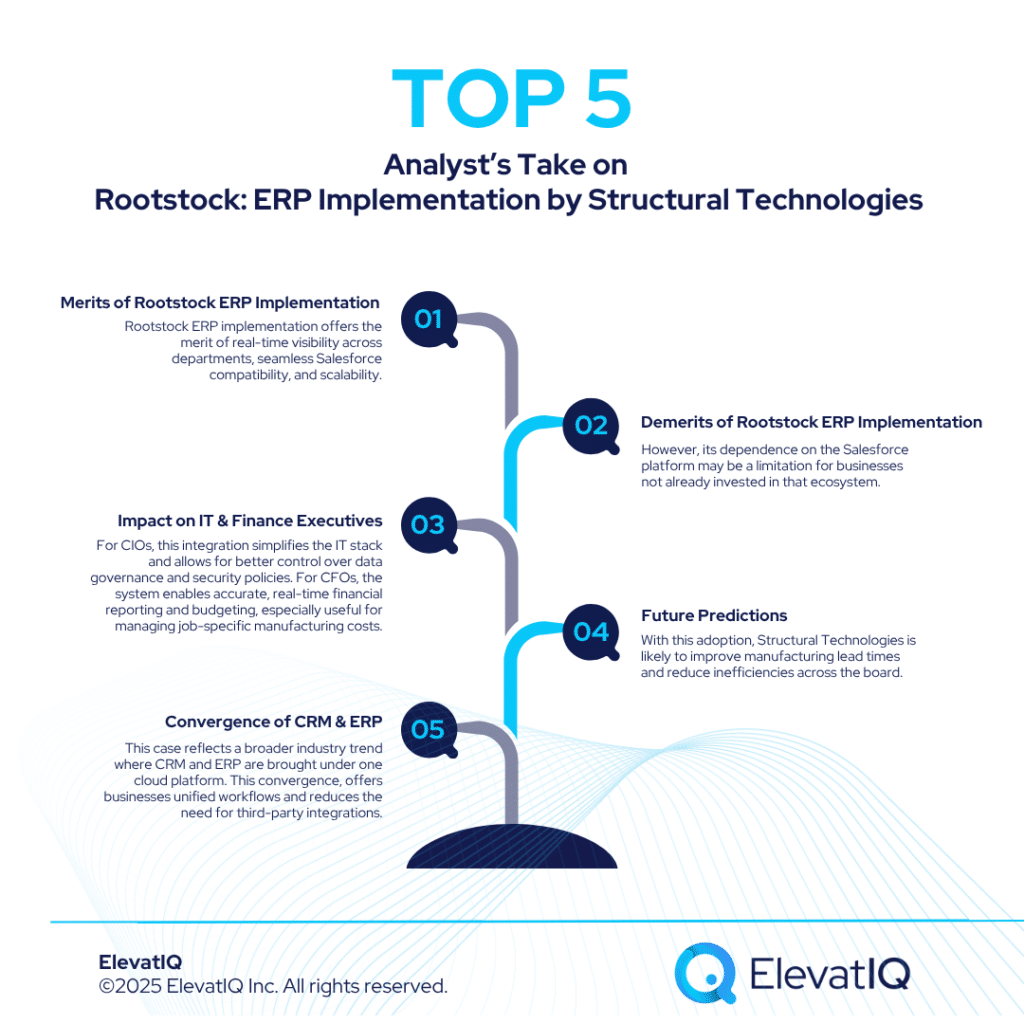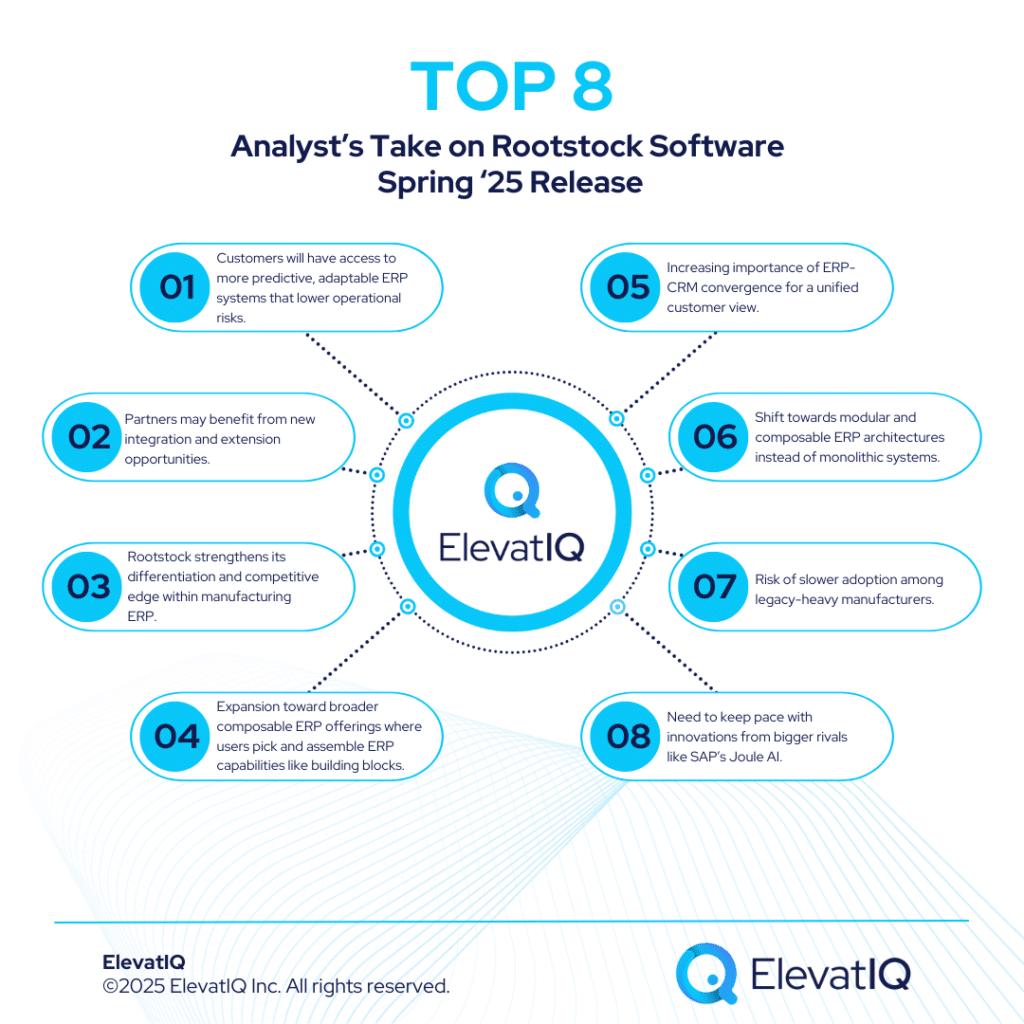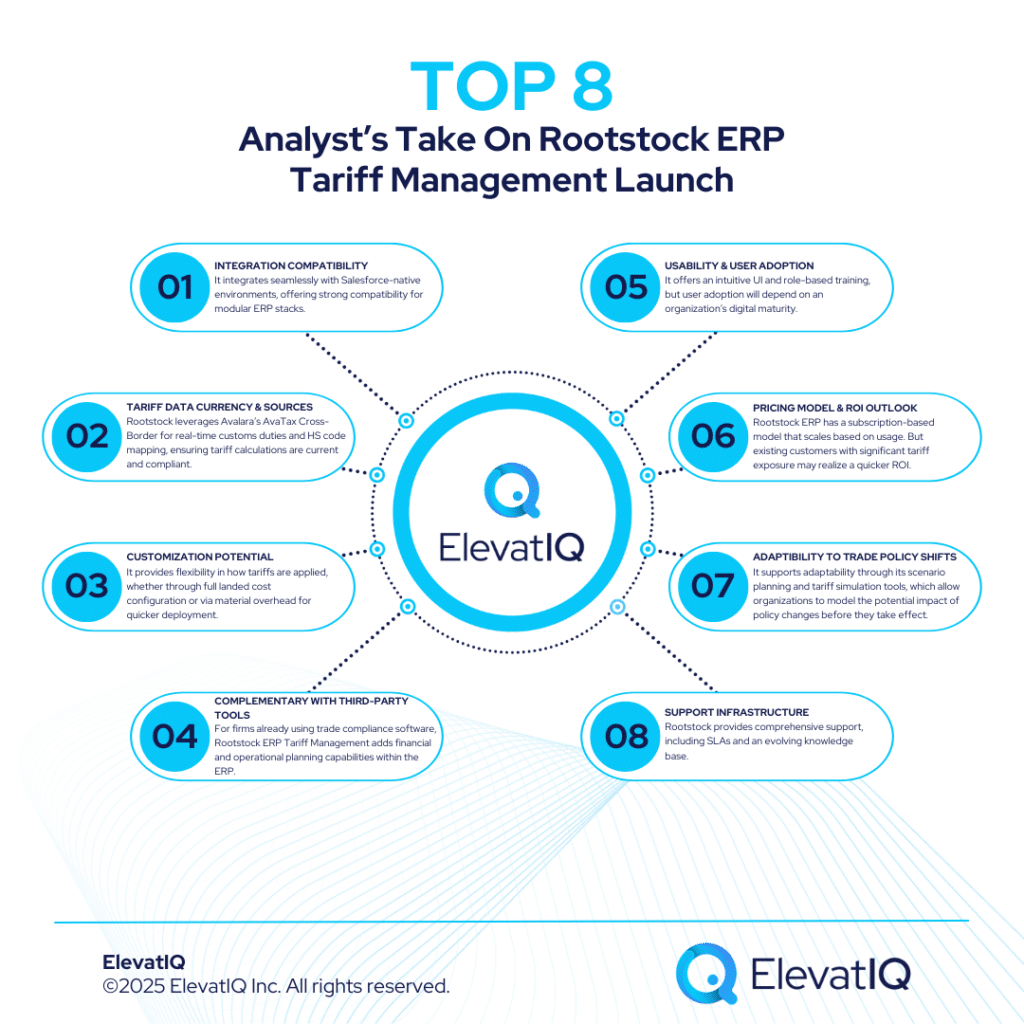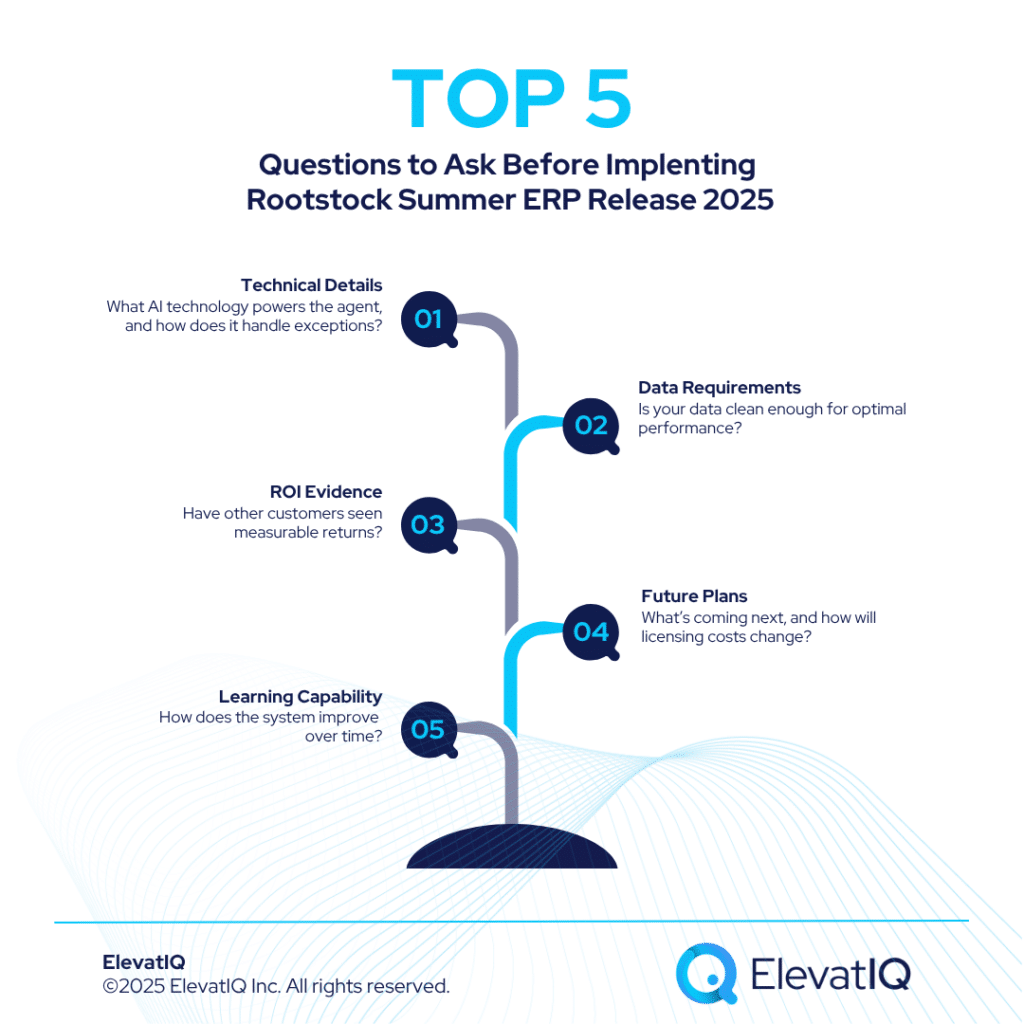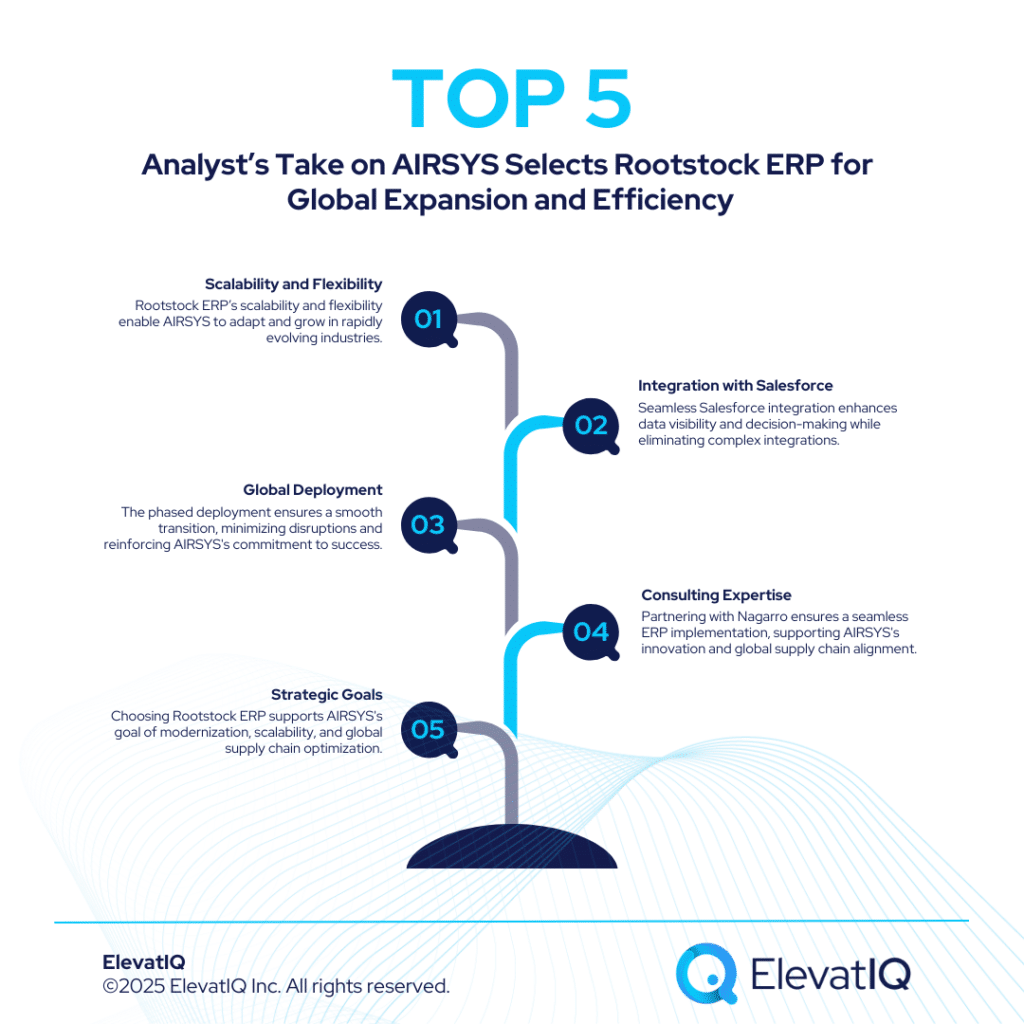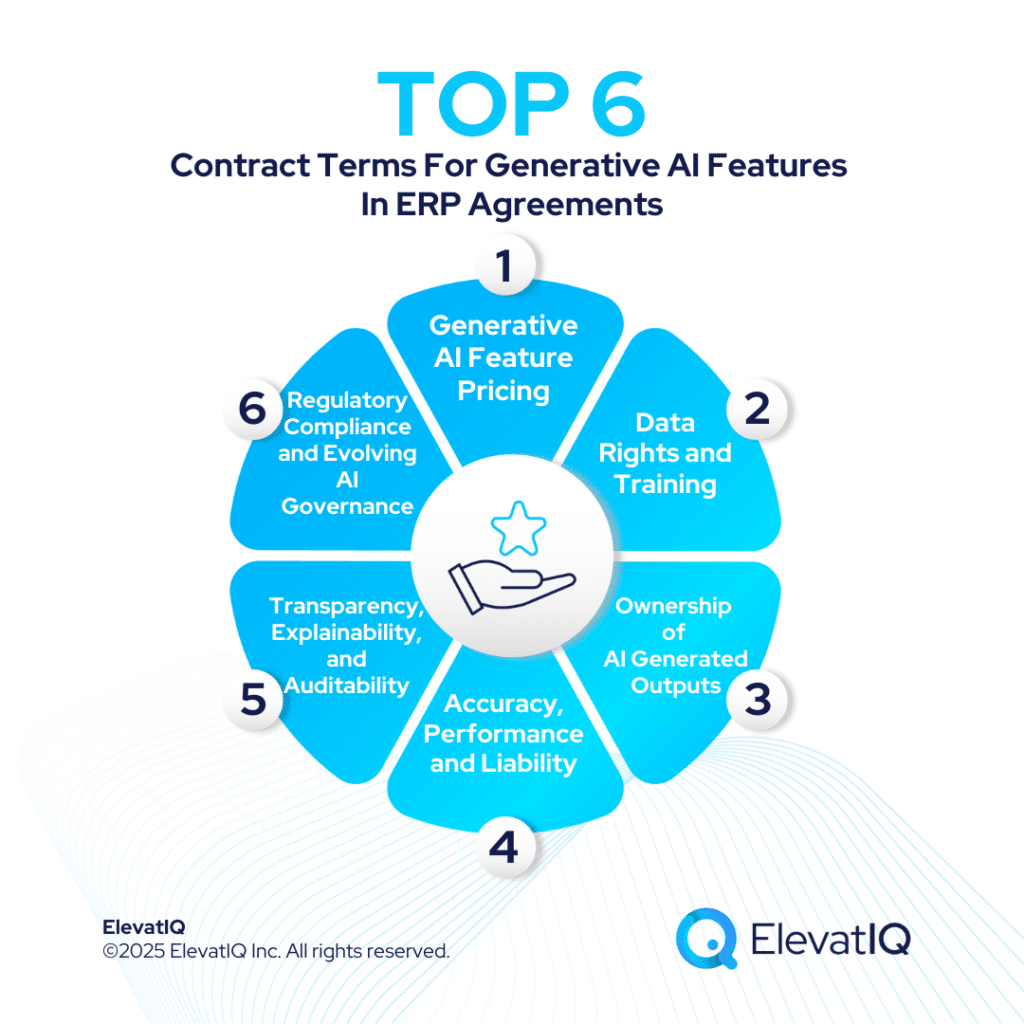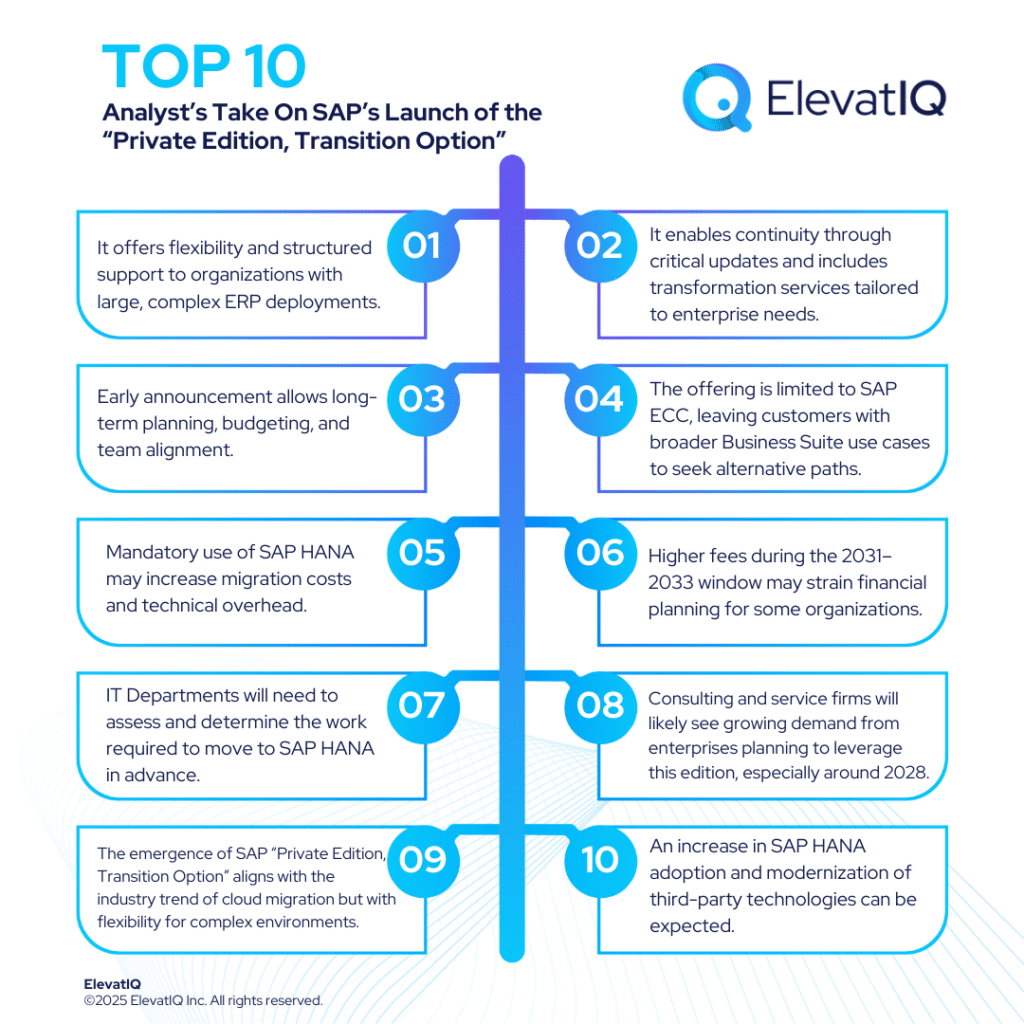Last Updated on June 23, 2025 by Shrestha Dash
Structural Technologies, a provider of engineered infrastructure solutions, has selected Rootstock ERP to replace its legacy systems and streamline business operations. This move aligns with the company’s long-term vision of driving innovation, improving data transparency, and scaling efficiently. The new system, built on the Salesforce Platform, will support various aspects of the organization, specifically project-based manufacturing operations.
Structured Breakdown of the News
A Shift Toward Cloud-Based ERP
Structural Technologies has opted for Rootstock ERP implementation, as well as ERP integration with Workday Financial Management—all part of its digital transformation efforts. The decision marks a transition from legacy systems to a modern, cloud-based ERP solution. This move is aimed at improving the overall operational efficiency, particularly in project-based manufacturing operations, including engineered-to-order production, and improving material and labor cost visibility.
Unified Data Through Salesforce Native Collaboration
One of the company’s key reasons to deploy Rootstock ERP was that it’s built on the Salesforce Platform. With both CRM and ERP systems built on the same platform, Structural Technologies expects to eliminate data silos and achieve a single source of truth. This is also expected to enhance collaboration between departments and support a more responsive customer experience.
Enhanced Project Manufacturing Capabilities
Rootstock ERP implementation will enable real-time tracking of costs, timelines, and resources associated with each production request. This improvement is critical for Structural Technologies, which often handles complex engineering projects with strict delivery requirements. The centralized system is expected to increase visibility across projects and allow for better resource planning.
Scalability and Flexibility for Future Growth
The cloud-native architecture of Rootstock ERP allows Structural Technologies to scale its operations without the constraints of on-premise infrastructure. As the company expands into new markets or adds new product lines, the ERP system can adapt to evolving needs with minimal disruption. This flexibility is also beneficial in responding to market fluctuations or regulatory changes.
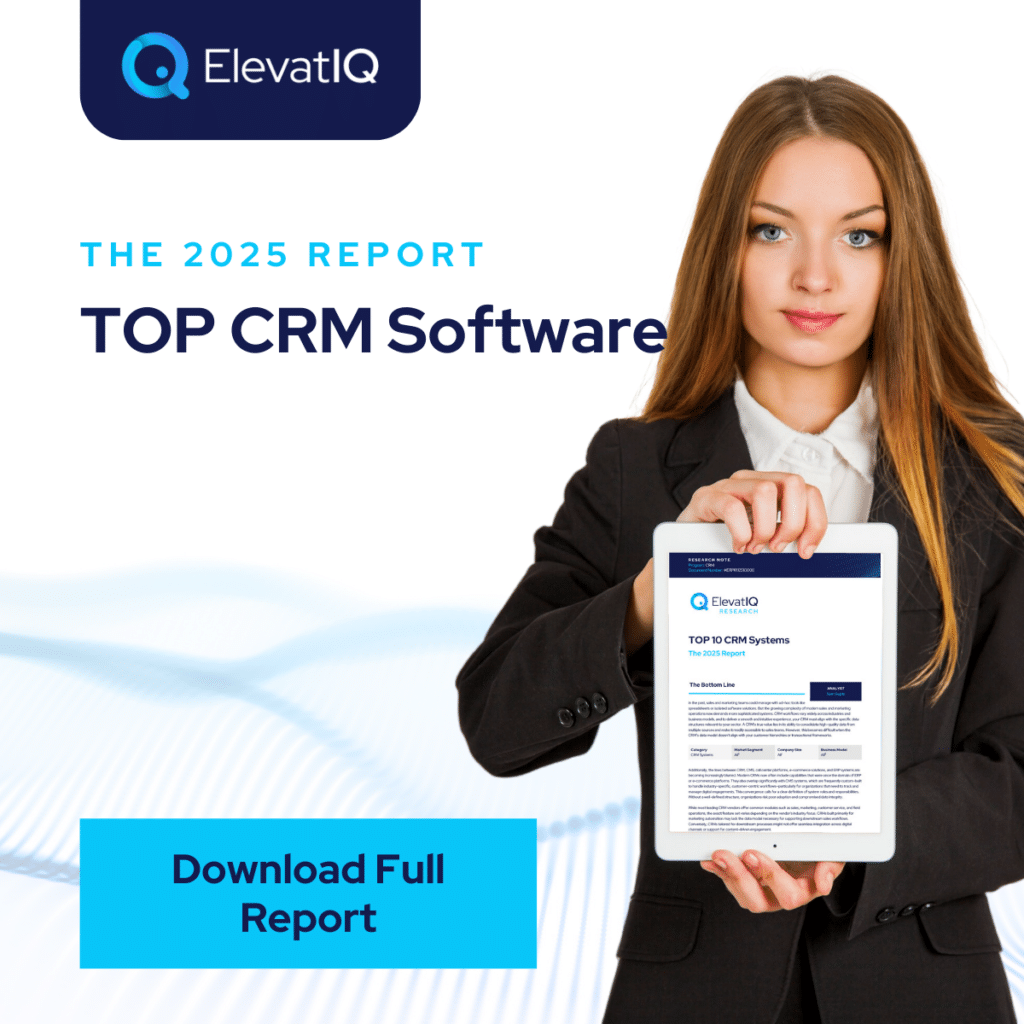
Leadership’s View on Transformation
“Our previous ERP was over three decades old and simply couldn’t support the complexity and scale of our current manufacturing needs,” stated Matt Young, CIO of Structural Group. “Rootstock was chosen for its comprehensive set of capabilities and seamless collaboration with Salesforce Sales Cloud, which we’ve used for years. Rootstock also has a certified Workday integration, which we will leverage as we deploy Workday Financial Management to unify our solutions, ensuring smooth data flow and enhanced efficiency.” This reflects the strategic importance the company places on technology as a driver of operational improvement.
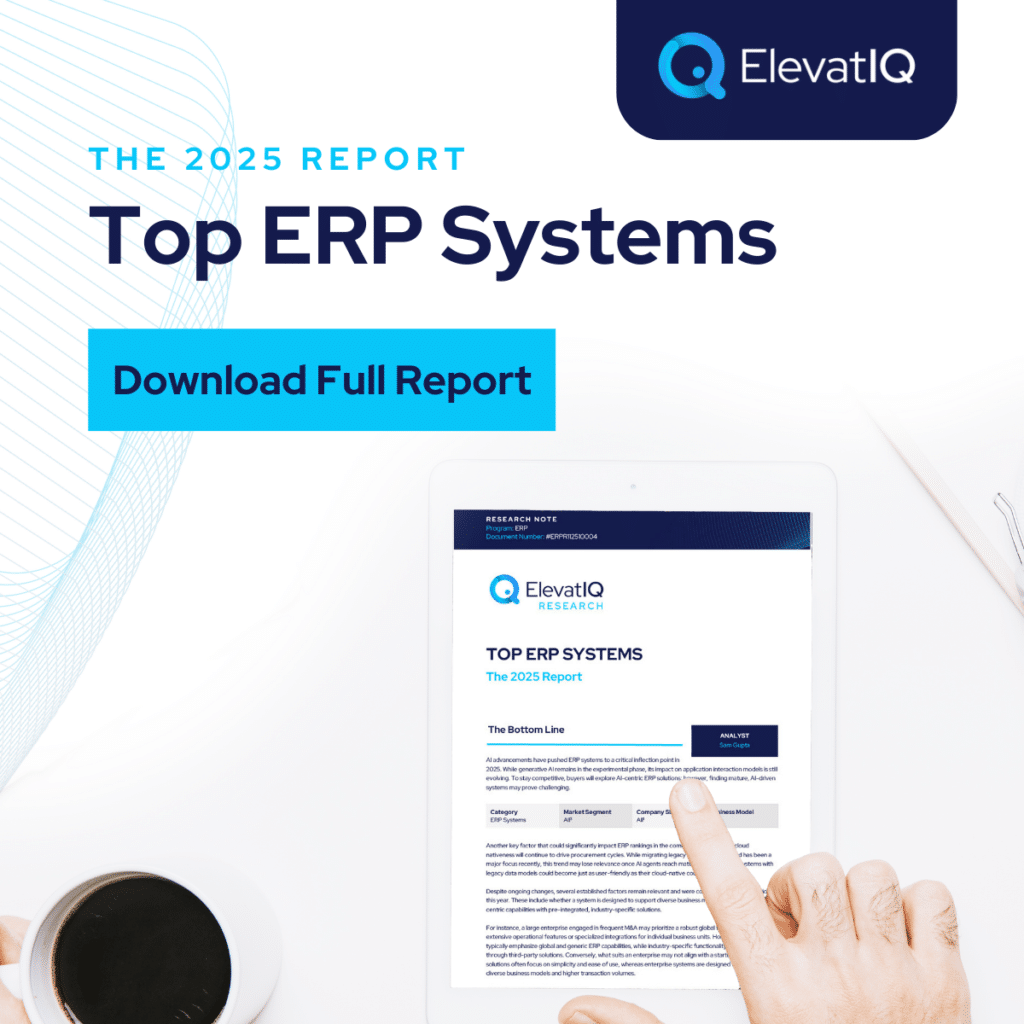
Common Questions That We Are Hearing
Why did Structural Technologies choose Rootstock ERP over other vendors?
The decision was likely based on the ability of Rootstock ERP to operate natively on Salesforce, offers robust project manufacturing capabilities, and support rapid deployment through the cloud. This alignment with existing platforms is expected to reduce friction in adoption.
Will the ERP system support both manufacturing and service workflows?
Yes. Rootstock ERP and Salesforce’s native collaboration support end-to-end processes for both manufacturing and services, allowing Structural Technologies to likely manage production, field service, inventory, and customer interactions through one platform.
What will happen to legacy data during this transition?
Rootstock ERP typically offers tools and support for data transfer from legacy systems, ensuring historical data remains accessible post-transition.
How long will the full implementation take?
Implementation timelines vary, but mid-market cloud ERP solutions like Rootstock ERP implementation generally aim for a go-live period within 6–12 months, depending on scope and customizations (based on the industry standards for mid-market ERP implementations).
Is this move primarily for cost-cutting or growth enablement?
This ERP adoption is expected to primarily be driven by the goal of enabling scalable growth and operational unification rather than direct cost-cutting, though efficiency gains may lead to cost benefits over time.

Analyst’s Take
Merits and Demerits of Rootstock ERP Implementation
Rootstock ERP implementation offers the merit of real-time visibility across departments, seamless Salesforce compatibility, and scalability. However, its dependence on the Salesforce platform may be a limitation for businesses not already invested in that ecosystem. Additionally, cloud-based ERP systems require reliable internet access and may introduce concerns around data control for some CIOs.
Impact on IT and Finance Executives
For CIOs, this ERP implementation simplifies the IT stack and allows for better control over data governance and security policies. The unified platform reduces integration overhead and simplifies user training. For CFOs, the system enables accurate, real-time financial reporting and budgeting, especially useful for managing job-specific manufacturing costs. The alignment between financials and operations supports better capital allocation and long-term planning.
Future Predictions
With this adoption, Structural Technologies is likely to improve manufacturing lead times and reduce inefficiencies across the board. Other firms in the engineering and infrastructure space may observe this move and consider similar Rootstock ERP implementation strategies, especially if they already use Salesforce.
Industry Trend: Convergence of CRM and ERP
This case reflects a broader industry trend where organizations are looking to bring CRM and ERP under one cloud platform. The Rootstock ERP integration with Salesforce supports this convergence, offering businesses unified workflows and reducing the need for third-party integrations. This trend is particularly notable among mid-sized enterprises seeking cost-effective scalability and fast implementation timelines.
